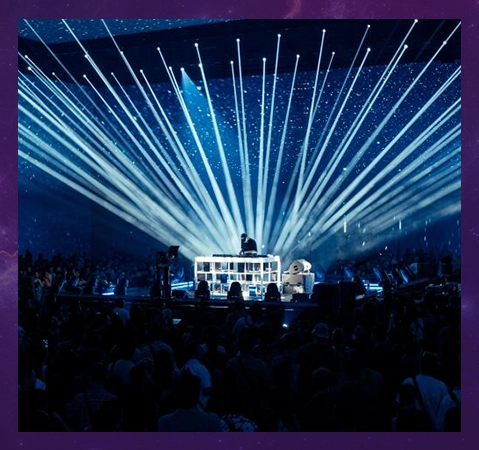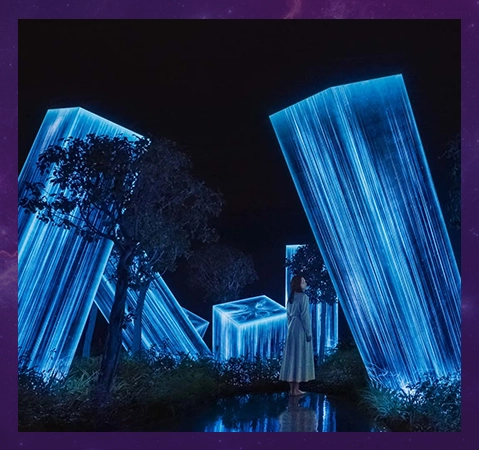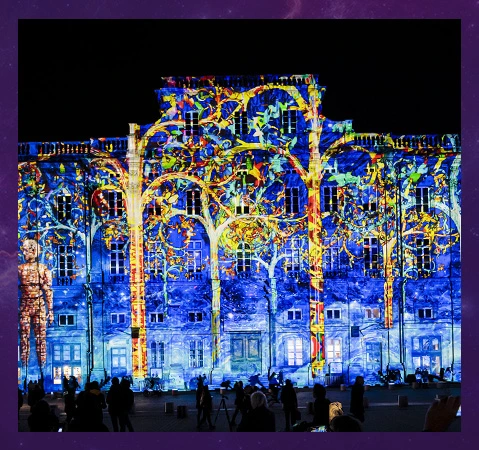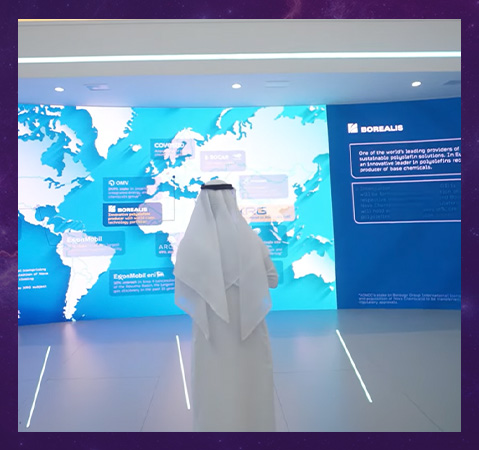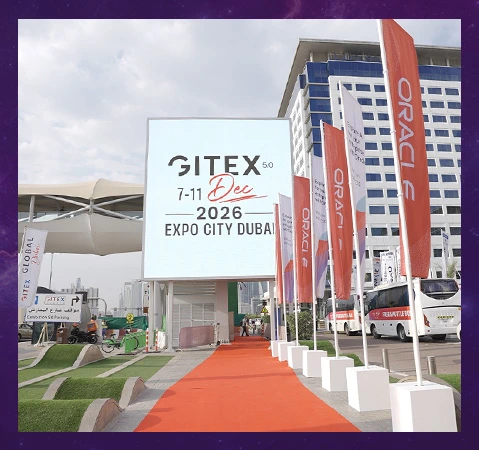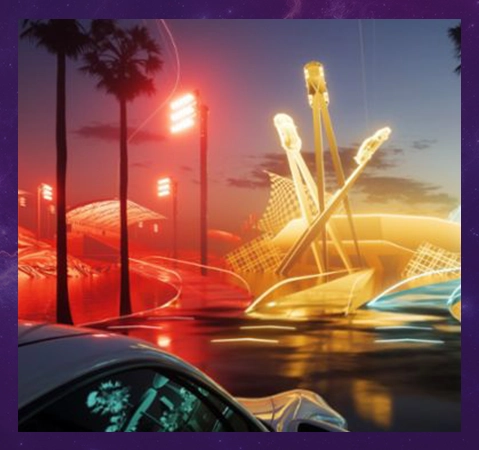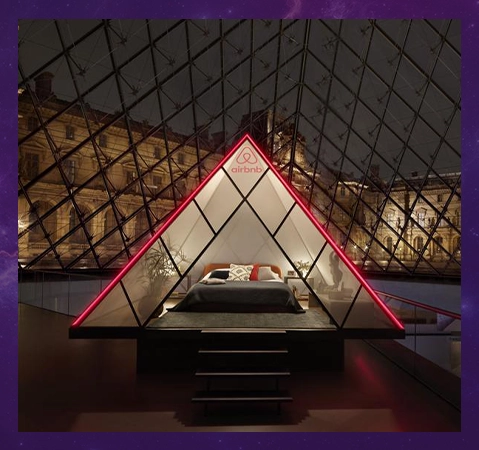
Everything You Need to Know About Experiential Technology
share

Forget flat screens and passive experiences. Imagine a world where museums react to your touch, stores come alive at your fingertips, and training simulations feel as real as life itself. That's the power of experiential technology! This article will help you cook up experiences that will captivate your audience.
Table of Contents
What is Experiential Technology?
Components of Experiential Technology
Key Technologies Driving Experiential Technology
Applications of Experiential Technology
What is Experiential Technology?
Experiential technology is the fusion of cutting-edge technology and human interaction. It's a toolbox filled with immersive tools like virtual reality (VR), augmented reality (AR), and interactive tours, all designed to captivate, engage, and inspire potential buyers.
But experiential technology isn't just about flashy gadgets. It's about fostering emotional connections with properties, making them feel real and personal for potential buyers. It's all about creating unforgettable experiences that engage with the audience and leave a lasting impression.
While experiential technology drives innovation in a variety of industries, including augmented reality (AR), mixed reality, and virtual reality (VR), as well as interactive installations, mechatronics, holographic, and kinetic displays, Sentient By Elysian stands out as one of the best companies in Dubai, UAE, and the GCC countries.
Experiential technology is a set of digital tools designed to create immersive, engaging, and interactive experiences during events. It blends physical and digital elements, offering unprecedented levels of engagement and interactivity. Experiential technology aims to elicit emotional responses, foster connections, and provide memorable encounters.
Components of Experiential Technology
The components of experiential technology vary depending on the specific application and desired experience. However, some common elements include:
- Hardware: It refers to physical equipment such as virtual reality (VR) headsets, augmented reality (AR) glasses, motion sensors, and haptic feedback devices. These devices allow individuals to engage with digital material.
- Software: Experiential technology uses software algorithms and programming languages to provide immersive simulations, interactive interfaces, and dynamic content.
- Design: It is of utmost importance in influencing individuals' encounters with experiential technology. The components included are user interface (UI) design, user experience (UX) design, and interaction design.
- Sensors: When it comes to capturing data from the real world and keeping track of user gestures, motions, and interactions, sensors like cameras, gyroscopes, and proximity sensors are used throughout the process.
Key Technologies Driving Experiential Technology
Experiential technology refers to technologies that are intended to generate mind-blowing, engaging experiences for humans. It overcomes the constraints of conventional approaches, in which information is passively absorbed. Instead, experiential technology promotes immersion, making you feel like an active participant in the unfolding event.
Here are some of the main technologies fueling this revolution:
- Virtual Reality (VR): VR headsets provide a completely realistic experience by separating users from the actual world and presenting them with computer-generated scenarios. This technology improves experiential technology by enabling people to explore and interact in virtual environments.
- Augmented Reality (AR): AR enriches the physical world by adding digital components, enabling interactive product displays, educational overlays, and location-specific experiences, ultimately increasing the user experience.
- Mixed Reality (MR): MR technology combines the physical and digital domains, enabling users to interact with virtual objects in the real world. It provides a dynamic and realistic experience by mixing VR and AR.
- Kinetic Displays: This technology uses physical structures and motion sensors to produce dynamic displays that react to human or environmental inputs, increasing the experience of technology by captivating attention and adding a new level to product presentations and art shows.
- Multimedia Content: It combines many media components, such as audio, video, text, and pictures, into immersive experiences. Interactive elements improve narrative and information delivery by building the audience's emotional ties and improving the overall experience.
- Robotics: This includes developing, producing, operating, and deploying robots for customer service, entertainment, and industrial activities, therefore improving experiential technology by adding a physical dimension to interactions.
- 3D Mapping: This technology uses powerful cameras and software to digitally portray real-world places or objects, influencing experiential technology by enabling virtual models for architectural design, product presentations, and interactive experiences.
- Holograms: This technology uses three-dimensional light fields to create physical object sensations, enriching immersive technology encounters with unique, interactive aspects.
Applications of Experiential Technology
Experiential technology has the capacity to profoundly transform several sectors, such as tourism, hospitality, education, entertainment, healthcare, and training. It has several applications, such as interactive learning, skill development, marketing, and retail. AR overlays may be used by the education sector to generate three-dimensional representations of historical people, while VR laboratories enable pupils to carry out virtual experiments in scientific laboratories. VR simulations may be used for skill improvement in several areas, such as flying training, medical operations, and language acquisition.
- Marketing and retail: Using augmented reality, companies and brands can make interactive product demonstrations, which improve customer engagement and make buying more enjoyable. During launch events or trade exhibitions, brands may personalize the brand experience for each consumer by creating an immersive environment. Data and analytics allow for the creation of personalized consumer experiences.
- Entertainment and leisure: With the help of augmented reality games and interactive exhibitions, businesses can take customers on a magical journey. Live performances may employ multimedia components to captivate an audience, while historical sites and museums can use them to bring relics from the past to life.
- Healthcare and training: The use of virtual reality (VR) simulations in medical training has the potential to revolutionize the healthcare industry by providing a risk-free setting in which surgeons may hone their craft. Virtual reality treatment provides a safe environment for individuals to overcome their concerns. Experiential technology may also be useful for teaching employees.
Experiential technology might also completely transform industries like hospitality, tourism, design, and engineering, in addition to the ones already mentioned. Tourists may virtually explore areas before planning a trip using VR experiences, and while traveling, they can use AR applications to get real-time information and help with navigation.
Why Experiential Technology Matters
The impact of experiential technology extends far beyond simply entertainment or novelty. By providing people with immersive and interactive experiences, experiential technology evokes powerful emotions, facilitates learning, and drives behavior change.
Also, experiential technology gives businesses and brands a one-of-a-kind opportunity to stand out from the competition, strengthen connections with customers, and create memorable brand interactions.
The travel and hotel industry, as well as hospitals, schools, shops, and the entertainment industry, stand to greatly benefit from experiential technology. It strengthens interactions with the content of brands or organizations by attracting people's attention and encouraging active participation, which enhances engagement.
Furthermore, businesses and brands can leverage experiential technology to create engaging and long-lasting relationships through the utilization of VR experiences. Similarly, social media networks' augmented reality (AR) filters promote emotional connection and sharing.
By embracing experiential technology, companies can stand out as it allows them to create unique and memorable experiences. Following this, Sentient By Elysian, a prominent Dubai-based experiential technology firm, devoted itself to offering brands and firms a wide range of services at various events and exhibits, including mechatronics, kinetic displays, virtual and augmented reality (VR) experiences, and more.
When it comes to engaging audiences and standing out in crowded marketplaces, immersive technology provides a one-of-a-kind and unforgettable solution.
Bottom Line
All of this is merely scratching the surface of what immersive technology has to offer. Future encounters will be even more unique and mind-blowing, thanks to the ongoing development of experiential technologies. Get ready to go into a world where the future is here and present.




